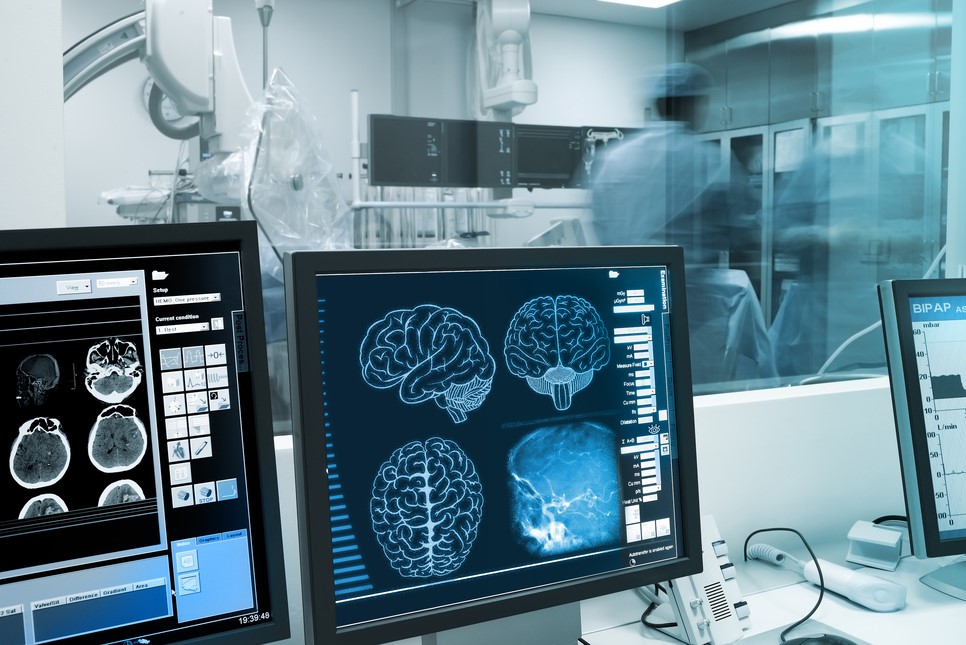
What is a brain biopsy?
A brain biopsy consists of taking one or more pieces of brain tissue for microscopic testing. The aim of this type of diagnostic test is to detect a possible brain lesion and to develop the most appropriate type of therapy
The test is guided by images obtained by CT or MRI during the same procedure and is called ‘stereotactic’ as it is based on three-dimensional processing (stereotactic brain biopsy).
What is the purpose of brain biopsy?
The aim of the brain biopsy is to detect a possible brain lesion and develop the most appropriate therapy.
Who can have a brain biopsy?
All persons for whom this type of investigation is essential undergo this test.
General contraindications in relation to the patient’s condition (blood clotting problems, for example) and specific contraindications to MRI (in patients with implanted electronic devices and metal prostheses, for example) or CT scans (allergy to contrast medium, for example) must be taken into account.
How is the brain biopsy performed?
The test is usually performed under general anaesthesia and only in some cases under local anaesthesia (elderly patients, for example).
The patient is placed on the operating table in the most appropriate position for reaching the area of the brain to be biopsied.
On average, the overall duration of the brain biopsy is about one hour, although the duration of the procedure also depends on how the patient responds to the anaesthesia and the position of the mass to be reached.
Is brain biopsy a painful and/or dangerous test?
The test is generally performed under general anaesthesia and only in some cases under local anaesthesia (elderly patients, for example).
Although it is much less invasive than an open procedure, brain biopsy is a surgical procedure in its own right.
In both cases, post-operative pain is kept under control by the administration of pain-relieving drugs.
Among the risks one faces when undergoing this type of diagnostic procedure are certainly possible bleeding or infection at the biopsy site.
Brain biopsy does not involve radiation: if it is performed under CT guidance, the patient is exposed to the same radiation as with a normal CT scan.
Are there any preparation rules?
Although it is a much less invasive procedure than an open procedure, brain biopsy is a surgical procedure in its own right.
Since the brain biopsy is performed under anaesthesia, it is necessary to be fasting from midnight the day before.
If you are undergoing daily treatment for other illnesses, you are generally allowed to take the daily pills unless otherwise instructed by your doctor.
Read Also
Emergency Live Even More…Live: Download The New Free App Of Your Newspaper For IOS And Android
Fusion Prostate Biopsy: How The Examination Is Performed
What Is Needle Aspiration (Or Needle Biopsy Or Biopsy)?
What Is Echocolordoppler Of The Supra-Aortic Trunks (Carotids)?
What Is The Loop Recorder? Discovering Home Telemetry
Cardiac Holter, The Characteristics Of The 24-Hour Electrocardiogram
Peripheral Arteriopathy: Symptoms And Diagnosis
Endocavitary Electrophysiological Study: What Does This Examination Consist Of?
Cardiac Catheterisation, What Is This Examination?
Echo Doppler: What It Is And What It Is For
Transesophageal Echocardiogram: What Does It Consist Of?
Venous Thrombosis: From Symptoms To New Drugs
Echotomography Of Carotid Axes


